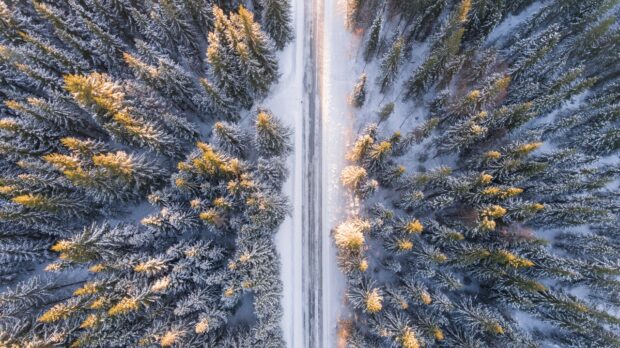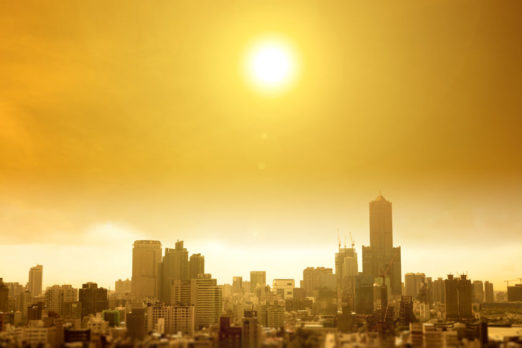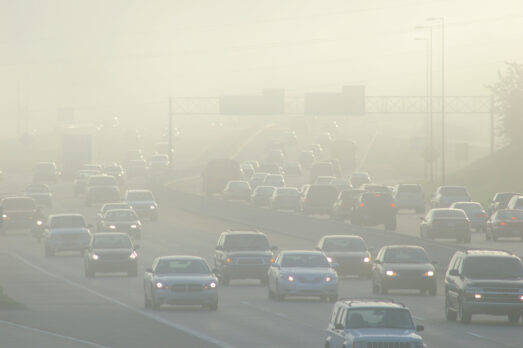
The past few summers have been breaking heat records but winters are actually warming faster than summers in most of the United States. The average winter temperature has increased 3.2°F since 1970 compared to the average summer temperature increase of 2.3°F.
While warmer winter temperatures may not seem like such a bad thing for those who can’t wait for spring, climate change is having a significant impact on winter forests. Warmer temperatures harm a winter forest’s ecology, health, and ability to store carbon and maintain water and air quality. Understanding these impacts and exploring potential solutions is crucial to preserve our forest ecosystems.
One of the main impacts of warmer temperatures in winter is whether precipitation arrives as snow or rain. In the western United States, spring snowpack declined by nearly 20 percent on average between 1955-2022. Snowpack reflects sunlight, and less snow cover means the sunlight is absorbed into the ground, warming the area around it.
Snowpack also helps regulate the health of forest ecosystems and organisms that live in them. Snow acts as a protective blanket for the soil and roots of trees, protecting them from freeze and thaw cycles. Lack of snow also disrupts the availability of water for trees in the spring. Drier conditions increase the susceptibility of forests to wildfires that destroy vast areas of forest and release large amounts of carbon dioxide.
Another significant threat is the outbreak of pests like bark beetles, pine beetles, and spruce beetles that can survive in warmer winters where they would normally die off from the cold. These beetles have killed millions of trees in North America and destroyed 85,000 square miles of forest in the western US and 65,000 square miles of forest in British Columbia. They devastate large swathes of forest, leading to loss of tree cover and biodiversity. And dead trees, in turn, become fuel for wildfires.
Some species of trees in the boreal forests cannot survive in warmer temperatures. These northern forests in Alaska, Canada, Scandinavia and Siberia account for 27 percent of world’s forests and store large quantities of carbon, especially in their soil. The boreal forests are expected to experience the largest temperature increase of all forest biomes. Warming temperatures are pushing these forests to shift northward to survive. The southern boreal forests are getting drier making the trees vulnerable to insect infestation and fires like Canada experienced in 2023.
While the threat of warming winters to our forests is significant, there are some potential solutions that can help mitigate the impacts.
We need to be proactive across multiple areas such as:
- Invest in forest management practices that promote forest resilience and biodiversity.
- Develop and employ effective pest management strategies that can help mitigate some of the damage caused by increased pest populations.
- Reforest areas with climate-adapted species.
- Monitor forests and conduct research to understand the changes to the forest and develop effective strategies to combat them.
- Increase public awareness about the importance of forests and the impact of climate change to foster greater community involvement in conservation efforts.
- Implement policies that focus on forest conservation, climate change mitigation, and sustainable land use, which can provide a framework for protecting winter forests.
- Address the root cause by reducing carbon emissions. Transition to renewable energy sources and implement sustainable agricultural practices.
The impact of climate change on winter forests is multi-faceted and requires a combination of scientific research, proactive management, policy initiatives, and public involvement to help mitigate these impacts and preserve our forest ecosystems for future generations.

Extreme heat events are getting more frequent and more intense. Globally, heat kills more people than any other natural disaster.…

Annual global bottled water consumption is estimated to have reached 118 billion gallons in 2023. That’s equivalent to 1 million…

The world is driving towards a new era of electric transportation. This is good news for fighting the climate crisis,…